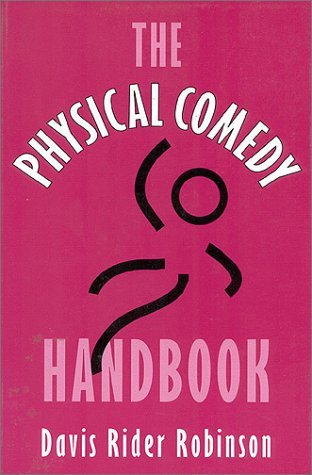A Joyful Dive into The Physical Comedy Handbook by Davis Robinson
As a long-time lover of comedy and a passionate advocate for the performing arts, I was thrilled to stumble upon The Physical Comedy Handbook by Davis Robinson. The prospect of delving into the nuanced world of physical comedy, especially under the guidance of someone with Robinson’s esteemed background, felt like a goldmine waiting to be explored. Little did I know, this book would not only enlighten my understanding of physical comedy but also rekindle my playful spirit.
Robinson’s book serves as a treasure trove of wisdom for actors, teachers, and directors alike. His belief that "the basic physical skills of comedy can be taught to anyone" resonates deeply and serves as a comforting reminder that creativity thrives not only in the naturally gifted but in those willing to play and practice. From slapstick pratfalls to the theatre of the absurd, Robinson tackles a broad spectrum of comedic styles, offering practical techniques that anyone can adopt.
One of my favorite aspects of the handbook is its combination of theoretical insight and hands-on exercises. Robinson doesn’t just tell you how to perform a pratfall; he immerses you in the playful mentality necessary for it. Each exercise comes with detailed explanations, variations, and even warnings about potential pitfalls—just like a wise mentor would. This approach allows readers to grasp not just the "how" but the "why" behind each technique, which I found incredibly enriching.
While the lack of illustrations has been a common point of contention among readers, I found the book’s succinct writing to be refreshing. Robinson’s clear and concise style ensures that you can easily digest and apply what you learn. I couldn’t help but be inspired to revisit the works of comedy legends like Buster Keaton, Charlie Chaplin, and the Marx Brothers—each page igniting a nostalgic spark for the timeless joy of slapstick humor.
Moreover, the glowing testimonials from readers echo my sentiments. From comments about the book’s practical exercises to the pivotal role Robinson has played in shaping aspiring performers’ careers, it’s evident that this handbook has made a significant impact across the board. Davis Robinson’s insights, combined with his warm, encouraging tone, create an atmosphere ripe for exploration and growth.
In conclusion, The Physical Comedy Handbook is a delightful read for anyone looking to deepen their understanding of physical comedy—whether you are a seasoned performer, a curious teacher, or simply a comedy enthusiast. It invites readers to explore the beautiful intersection of playfulness and technique, encouraging us all to embrace our inner child. Personally, I emerged from its pages with newfound inspiration, eager to practice and play, and may even try my hand at crafting my own comedic sketches!
So if you’ve ever found joy in the art of physical comedy, or are simply curious about the craft, I wholeheartedly recommend this handbook. It’s not just a guide; it’s an invitation to engage with the world in a wonderfully humorous and whimsical way.







